I spent the best 5 weeks of my life solo travelling across Ghana to learn about Ghanaian food, culture and history. I travelled through 7 regions (Greater Accra, Ashanti, Eastern Region, Volta Region, Northern Region, Savannah Region, Upper East Region) in Ghana from the farthest south to the farthest North. In this post, I will give a detailed breakdown of my trip to Ghana, focusing on southern Ghana (Greater Accra, Ashanti, Eastern Region, Volta Region) for this blog post. I will be including transport, accomodation and activities at each location with details about guides and everything I did to have a fantastic time in Ghana. This guide is for both Ghanaians and non-Ghanaians looking to see more of this beautiful country. For details on everything you need to know when planning your trip to Ghana, make sure to check out this blog post (click here), which covers information on flights, visas, vaccines and money.
Accra
Day 1
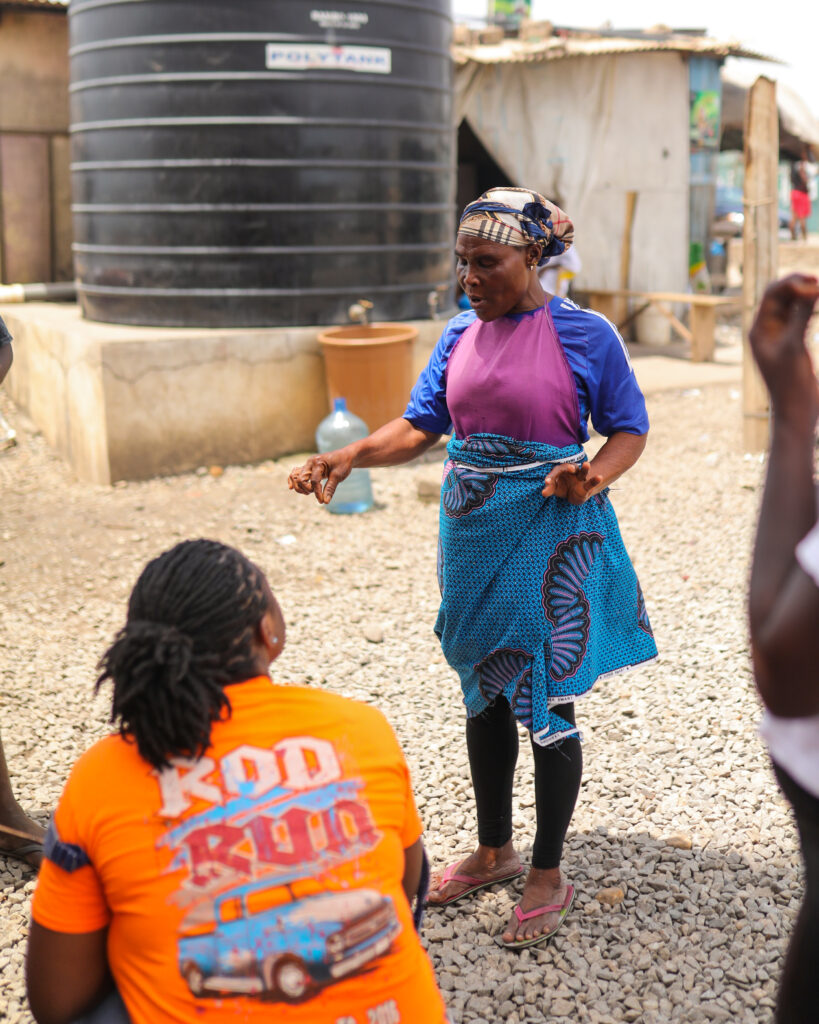
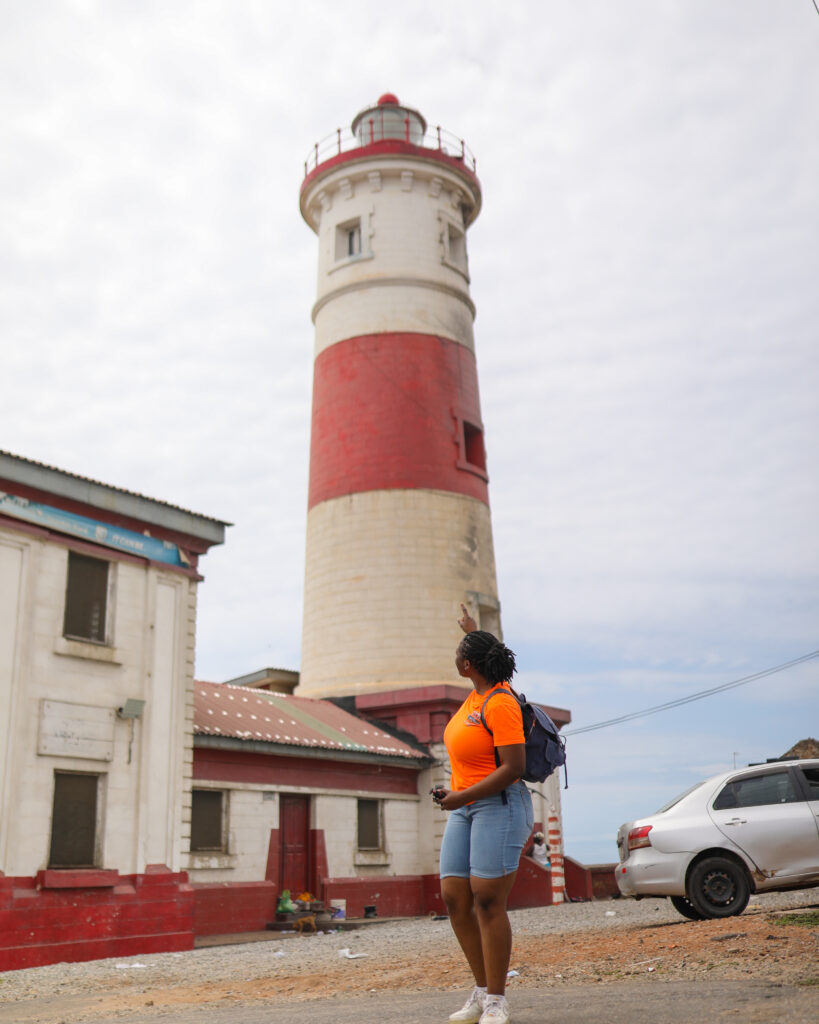
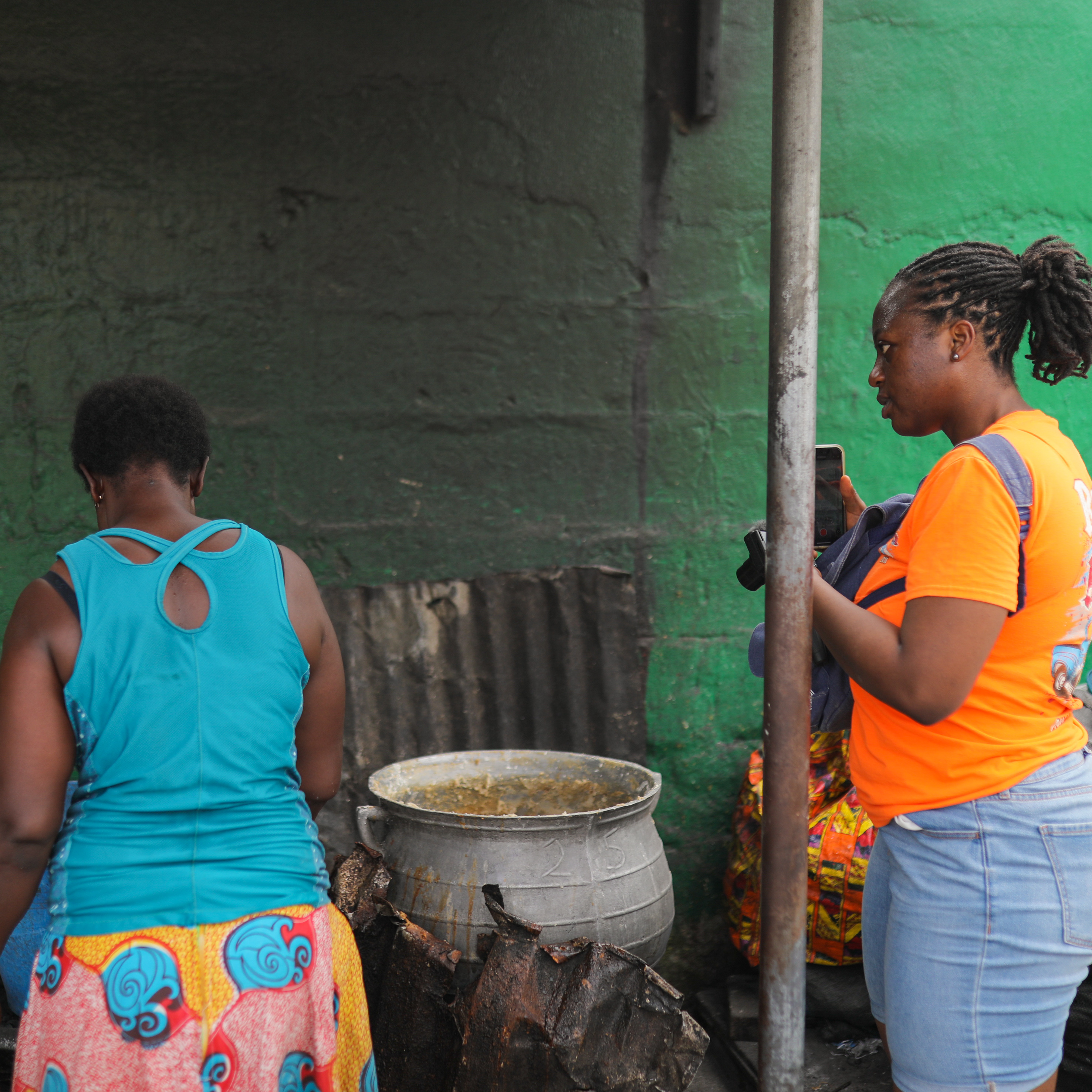
I started my trip in Jamestown hoping to learn more about Ga food and culture. Jamestown is one the most historic parts of Accra with a rich history that shares the ills of colonialism but also the perseverance of the people. We got a brief history of the place and took a tour around the town where I saw the process of making kenkey (fermented corn balls wrapped in corn husk). In addition, I learned about Asaana (which is a fermented corn drink) and also fermented corn porridge, which they call kpokponsu.
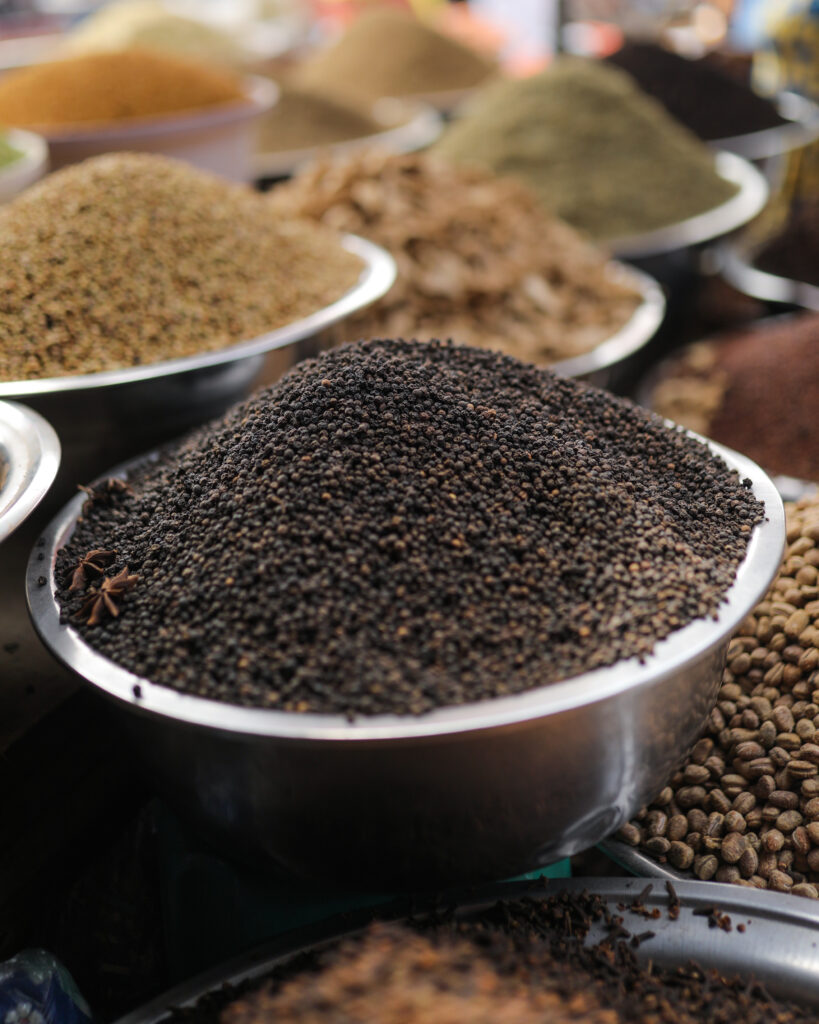
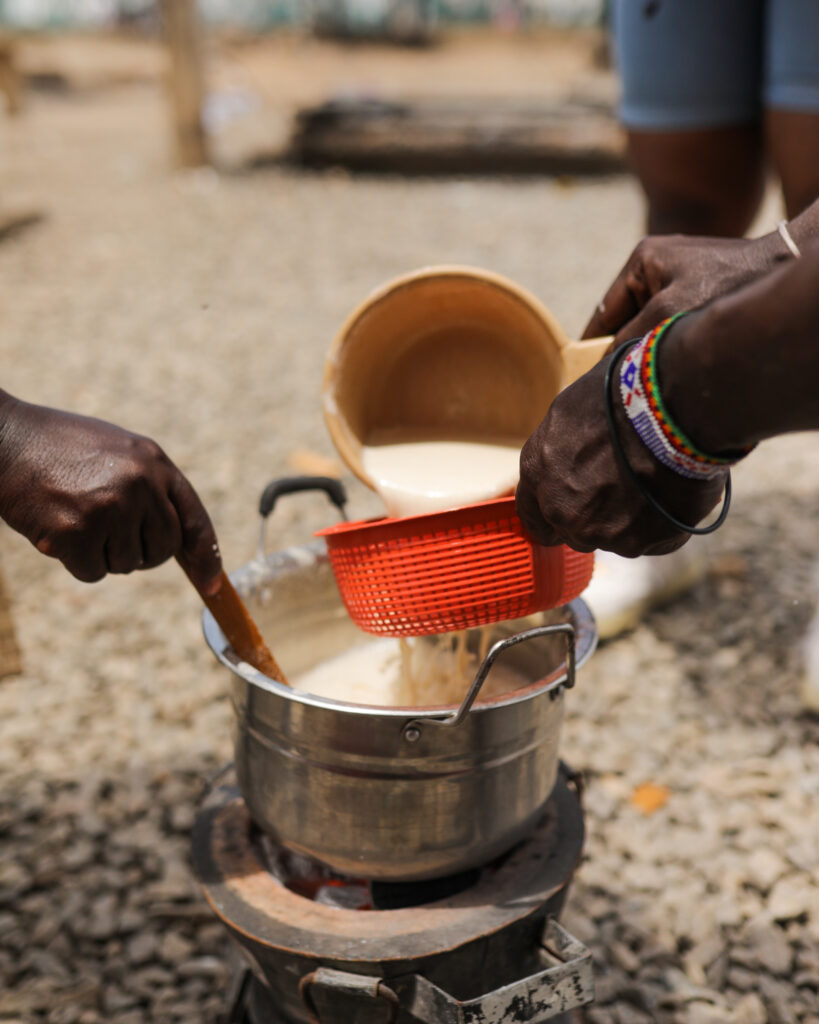
From there, we moved on to Nima market for a spice tour as well as a drinks tour. I love spices so I felt right at home here. Nima market is one of the largest markets in Accra with a predominantly Muslim community and many residents from northern Ghana. At Nima, you get to sample a variety of dishes and drinks from northern Ghana as well as find a plethora of local spices and spice mixes. It is certainly a must-visit.
Day 2
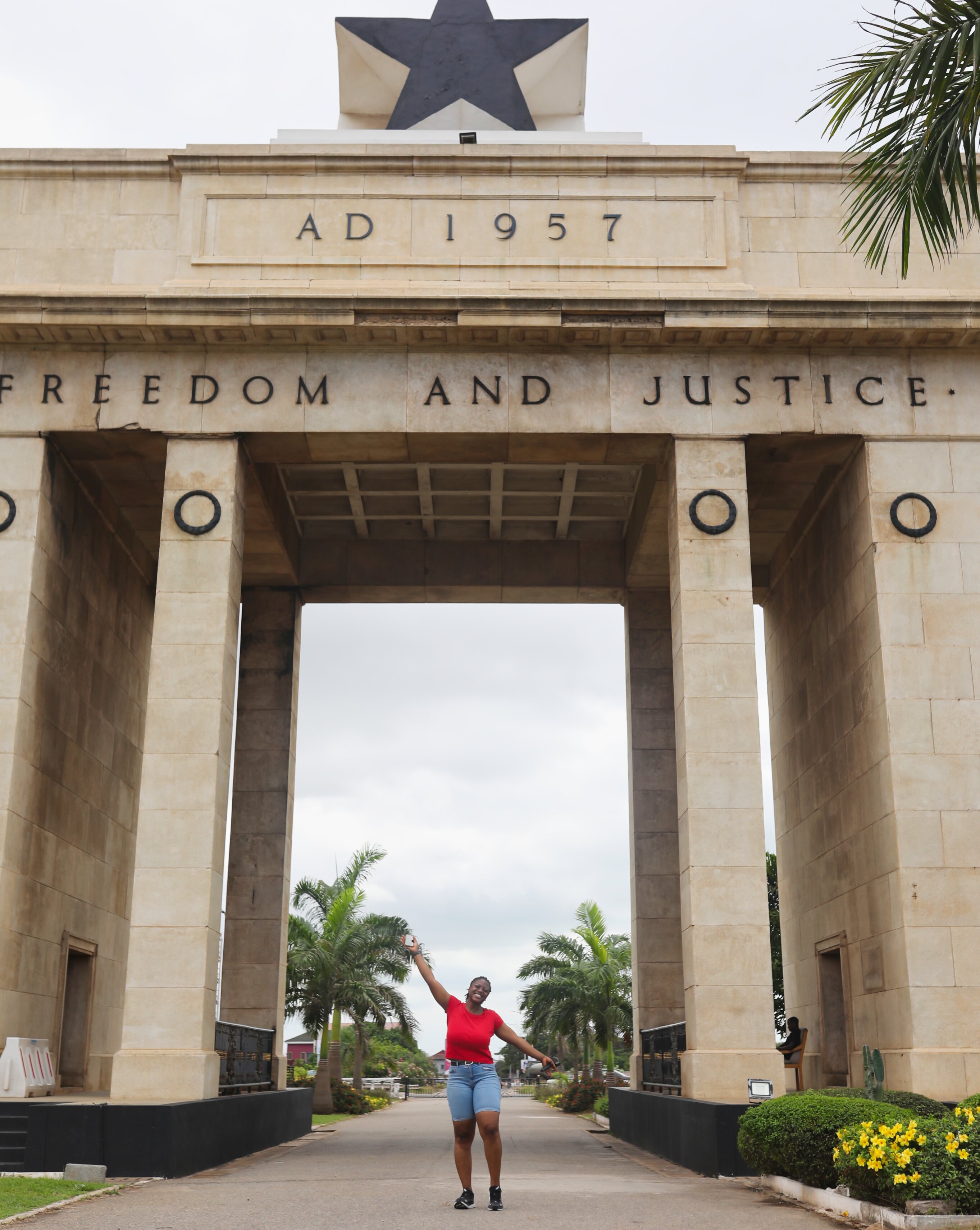
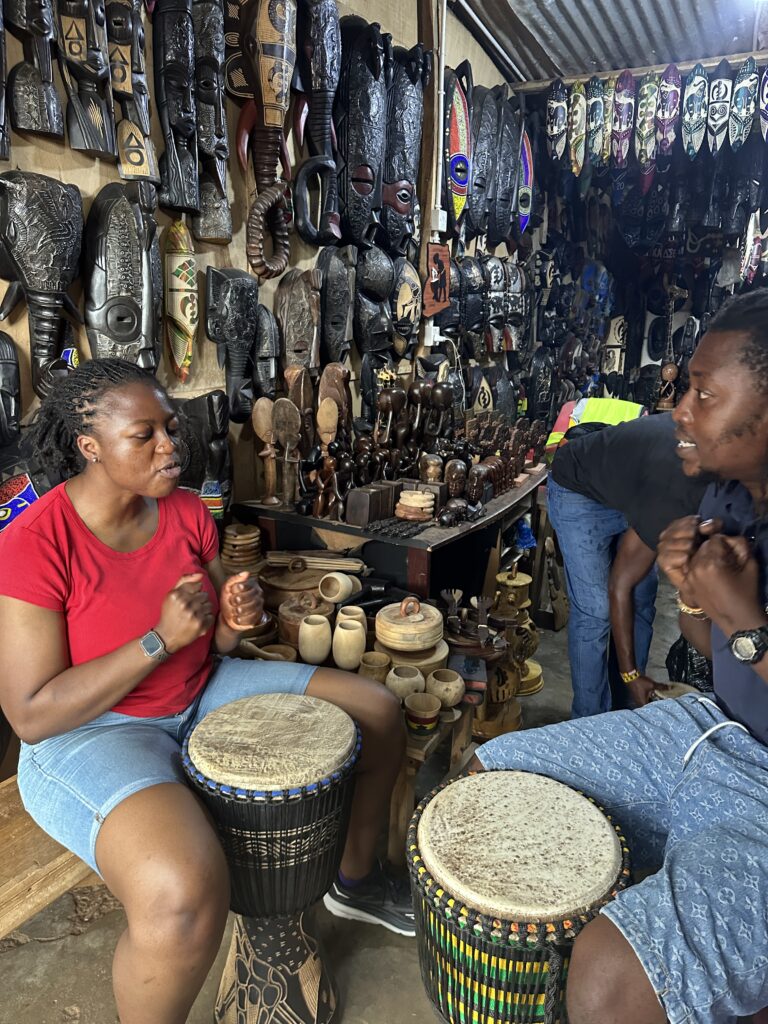
I spent one day fully focused on the history of Ghana. We started with a trip to Independence Square as well as the arc. We moved on to Asomdwie Park where the late President Atta Mills was buried. The park is relatively new but could have been better maintained. Afterwards, we headed to the newly renovated Kwame Nkrumah Mausoleum where Kwame Nkrumah was buried. At the mausoleum, you also get to see artifacts from Nkrumah’s life.
We did a pit stop at the Accra Arts Centre where I learned about traditional drums and got a small lesson before the rains abruptly ended our time at the arts centre. From there we went to the national museum to learn about the first people in Ghana and the evolving history of the country. Obviously, as a foodie, we made our way to Makola market to just check out the market and sample a few drinks. Makola is probably the largest market located in the heart of Accra; here you can get anything you need from food to clothes to suitcases and household appliances.
Food Tour with Torikubu
I planned a separate food tour with an internet friend, Torikubu. Torikubu is a Ghanaian foodie who loves to learn about Ghanaian food and offers food tours of Nima, Osu and Makola. We spent the day together and tried a few things.
In the morning, we stopped by a breakfast spot in Accra where I got to sample Ghana’s favourite porridges available. I tried oblayo (homony) porridge, ekuagbemi (corn grits porridge), cracked red wheat porridge, white corn porridge, and Tom brown (roasted grain and legume porridge). Everything else was finished so I could not try the oats and rice water. This spot is called Maggie’s Special Breakfast near the CSIR Food Research Institute at Airport/ Opebia, serving breakfast in the morning during the weekday.


From there, we went to get Ogray’s Special Tatale in Adabraka/ Asylum Down where we tried hot tatale, aboboi, kelewele, gobe (plantain, oil, gari and beans) and also saw a soya seller selling soya skewers (tofu with suya spice).
From there we went to Nima market and tried masa, a fermented mini rice pancake, which tasted like sourdough, Kunu (a spiced millet and potash porridge), tamarind lamurji (samya, made from tamarind and ginger), attieke (fermented grated cassava with toppings), kuli kuli and fermented sorghum porridge with pinkaso and kose.


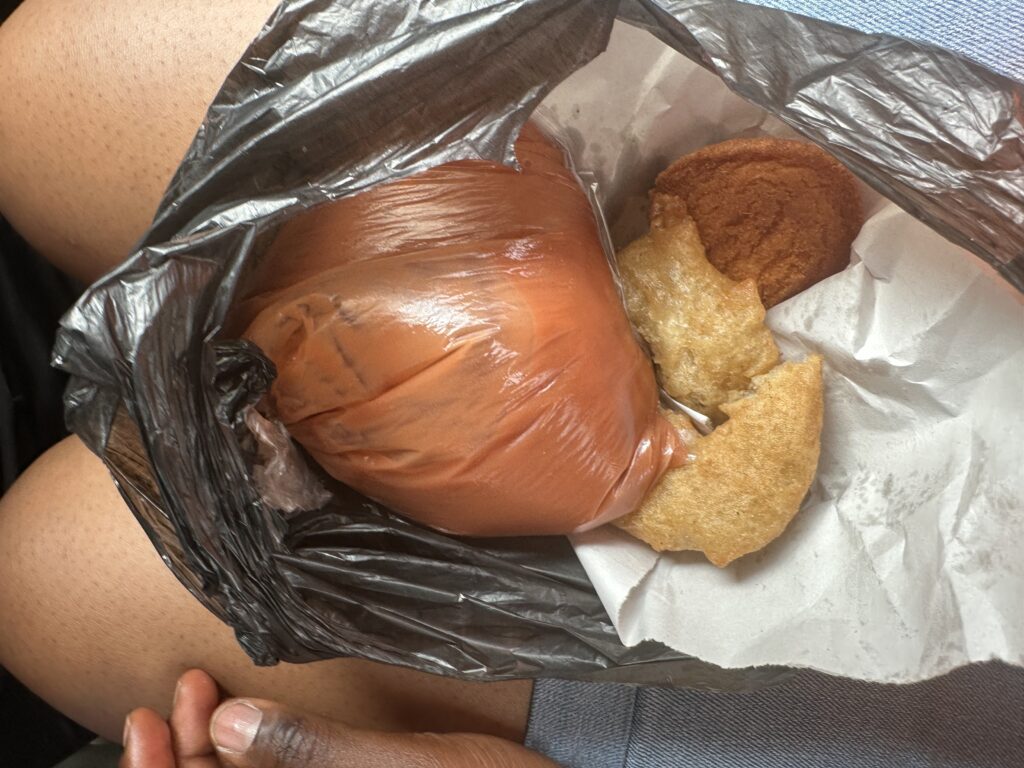
I was stuffed by the end but it was amazing.
Organizing my Accra Trip
I booked the first two days of my trip with People and Places. They adjusted their packages to accommodate my interests. They provided a tour guide who picked me up from my accommodation, accompanied me to each of the locations and took my pictures as well as a driver who transported us everywhere. For these two days, I spent a total of 130 USD. I purchased my meals separately and usually also covered the meals for my tour guide and driver. I was responsible for booking my trip with Torikubu who I contacted through Instagram. Click here for her bio.
Central Region
Kakum National Park
After my Accra tours, I headed to Cape Coast for a day trip. We started at Kakum National Park which is one of the largest national parks in Ghana. This park is a coastal rainforest that houses a large diversity of plants and forest animals. In the 90s, a canopy was included to boost tourism and provide more income to maintain the park. When we got to Kakum, we were greeted by a few vendors selling palm wine and fresh cacao fruit. This will become a theme throughout my trip to Ghana. Palm wine and cacao are not available every time of the year, mainly towards the end of the year when the rainy season ends. cacao fruit tastes just like soursop and it is delicious. Good quality palm wine is sweet and has a coconut flavour.
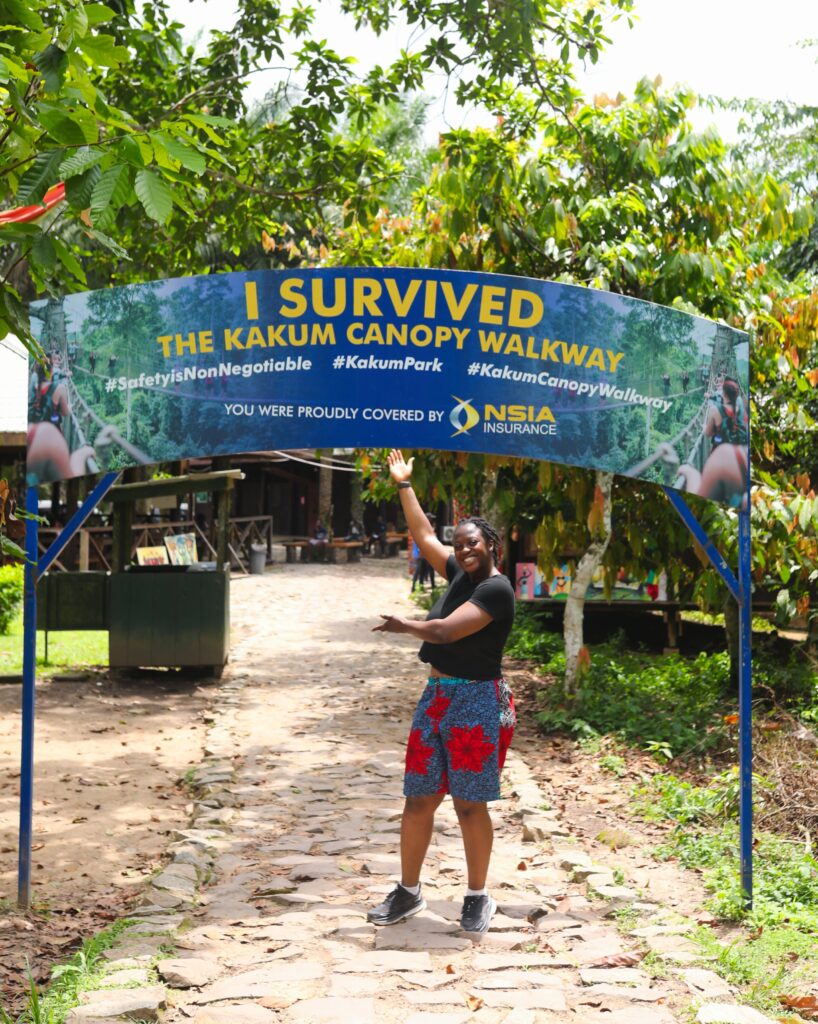

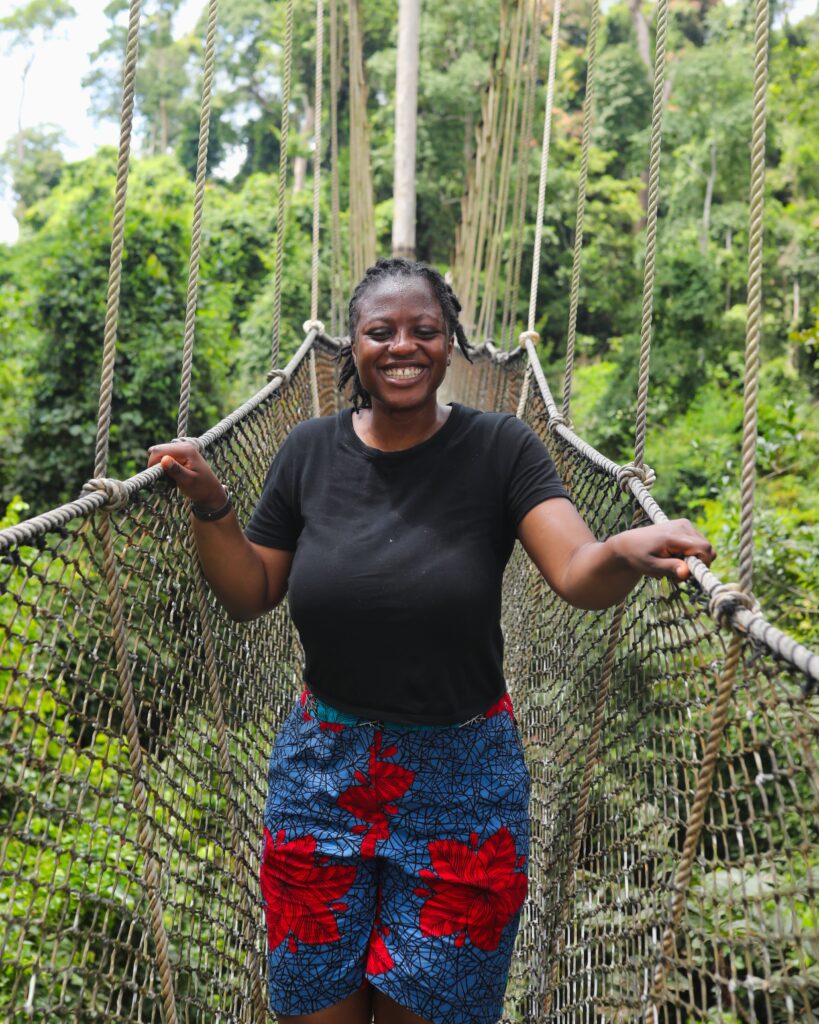
After refreshments, we did a brief tour and hike of a small portion of the park where we learned about indigenous trees, their uses and some medicinal properties. Then we did the canopy walk, which was exhilarating. The park ranger spent many minutes assuring us that it was safe and well-maintained. If you are scared of heights, I will not recommend it.
Cape Coast
After Kakum, we took a short drive to Cape Coast Castle to learn about the colonial presence in Ghana. Ghana has some of the highest concentrations of European-built forts on the West African coastline. 3 major castles (Cape Coast, Elmina and Osu Castle) and 30+ forts, some of which have been swallowed by the sea. A lot of these castles changed hands multiple times and were the sites of terrible sins. Our tour guide at Cape Coast Castle gave us an overview of the history that supplemented the information from the Cape Coast Castle Museum located near the entrance of the castle. Castles and forts are generally more frequented by African Americans who hope to learn more about the dark history of enslavement that affected their ancestors, usually adorned in white to honour their ancestors. Although a difficult visit, I do encourage people to visit to see for themselves.

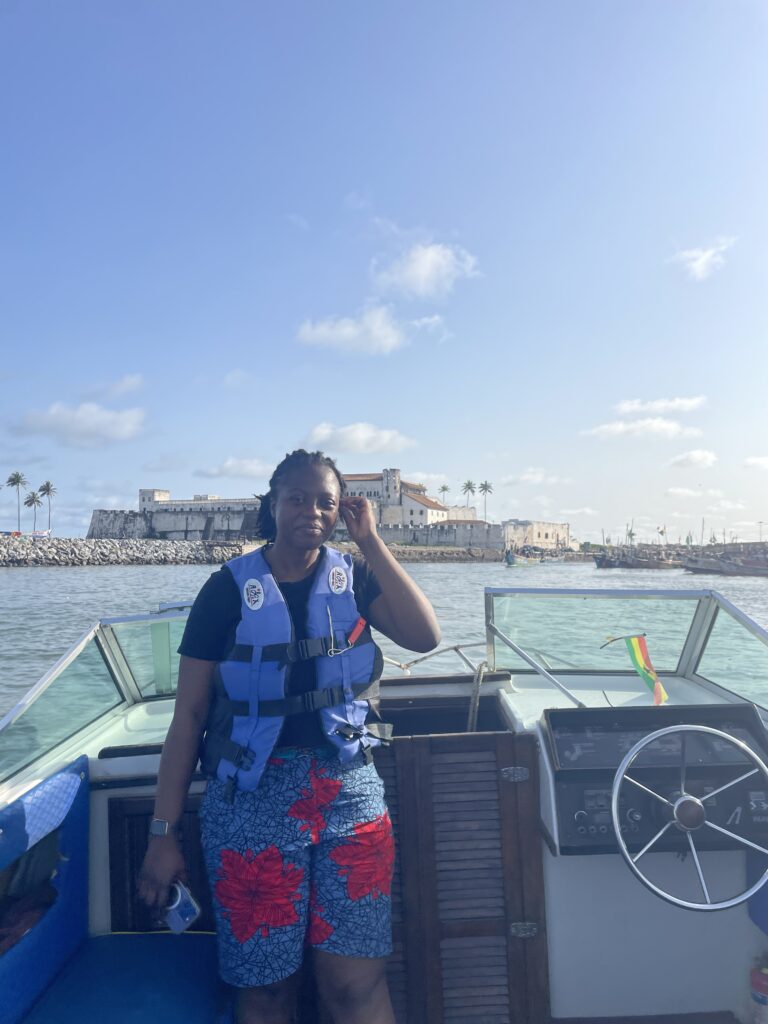
Elmina Boat Cruise
From Cape Coast Castle, we drove to Elmina for a boat ride. Elmina is also the site of the largest castle/fort in Ghana. However, we did not go in, we took a boat ride around the lagoon and the castle. It was interesting to see the contrast between the Elmina castle grounds and the vibrant fishing community; the castle had a daunting and ominous look about it with a shoreline that was empty and looked deserted where as the fishermen were parked accross from the fort in a vibrant community. The boat ride gave us a brief history of the people of Elmina and the fishermen. Although I do not eat fish, I did appreciate the boat tour to learn about the community, their culture and tradition. Something very cool was to hear that the fishermen only used flags and the wind to navigate, no compass or GPS.
After Elmina, we had a pit stop at a hotel for a late lunch and then returned to Accra. The car ride is about 4 hours with police stops.
Organizing the Cape Coast trip.
Everything for this trip was handled by People and Places, just like my Accra trip. For this day trip, I paid 140 USD.
Ashanti Region
Road Trip
For this 48-hour trip to Kumasi, we started early in the morning. My tour guide from People and Places picked me up with a driver who had a 4-wheel car for a 5 hour road trip. The road can be bumpy so a bigger vehicle is more comfortable. We started with a scenic drive through the Aburi Mountains and then on to Adanwomase. We chose to drive because we wanted to visit a few places outside of Kumasi, however, flying to Kumasi is also incredibly popular. For a more affordable option, taking a bus from Accra is more common. People prefer VIP buses because they leave immediately when they are full but STC is a proven safer option for travelers.
Adanwomase
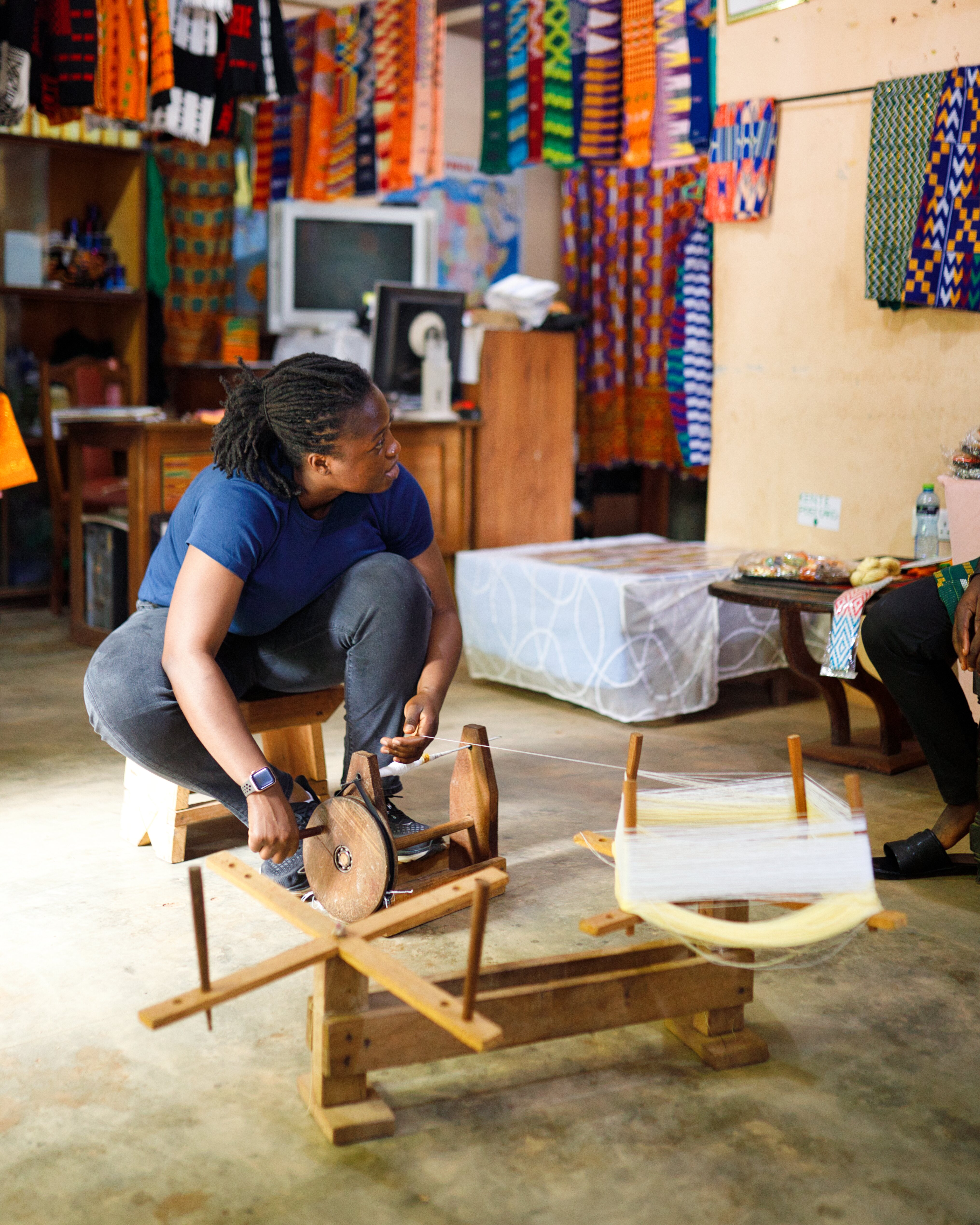
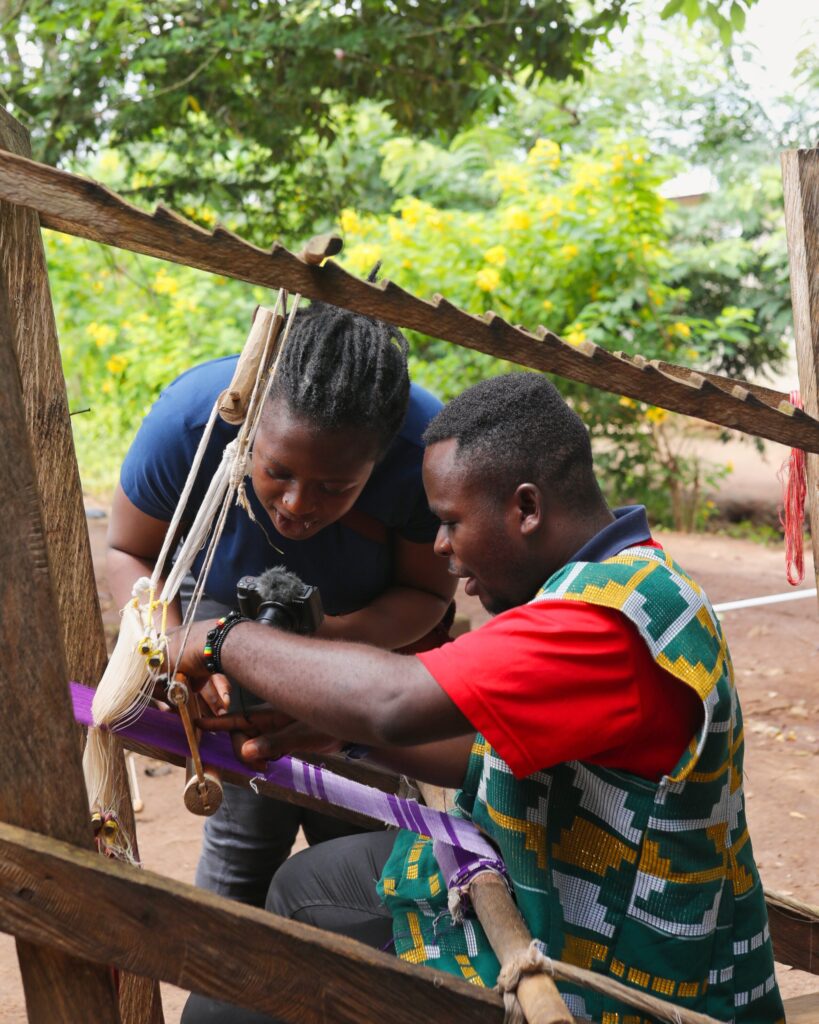
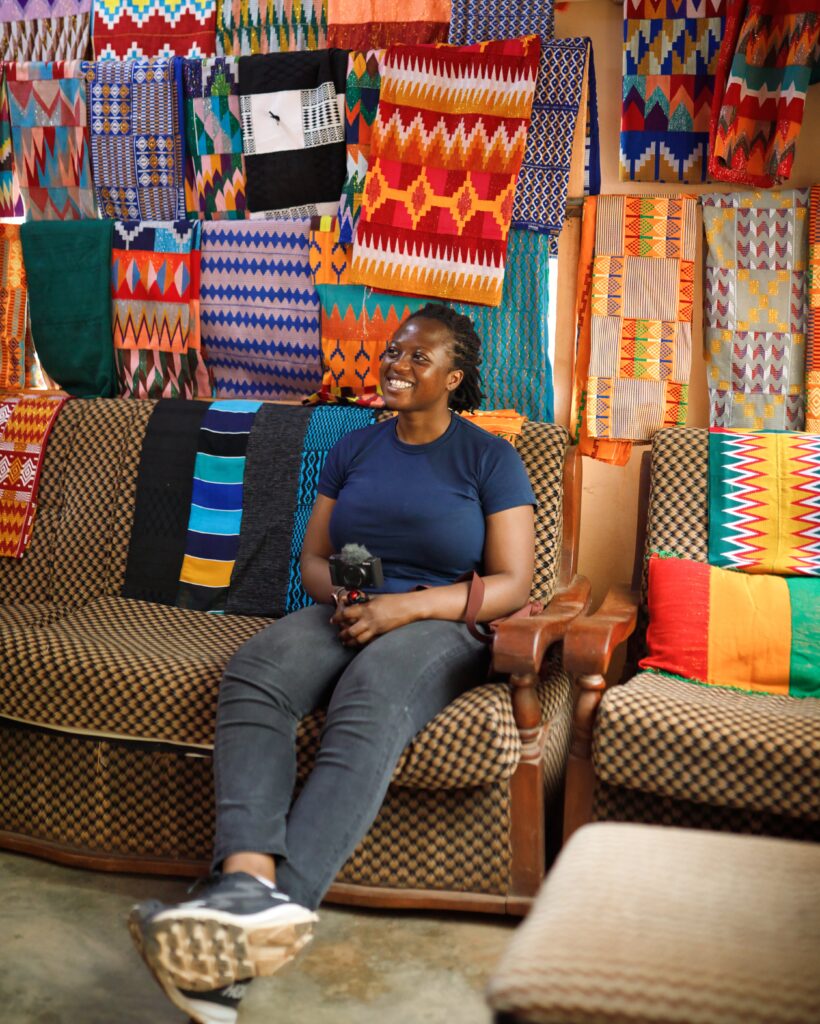
Adanwomase is a village located in the Ashanti region known for kente weaving. Woven traditional clothing can be found across the country with various ethnic groups in Ghana crafting their own unique clothes that are symbols of culture and tradition. Kente cloth has a rich history in Ghana and serves as the traditional cloth for the Akans as well as the Ewes. There is a lot of dispute about the history of kente, which is not the purpose of this post. At Adanwomase, we got a history lesson on Kente from the Asante perspective, what different designs symbolize and how it is woven. In addition to kente, this cultural site also offers other activities such as a cacao farm tour as well as a cooking class and naming ceremony for African descendants of enslaved Africans who want a more permanent cultural connection to Ghana. As a vegan, they were able to accommodate my dietary choices with an all-vegan fufu cooking class. This experience was the first stepping stone in slowly changing my approach to Ghanaian food, which is moving from complex to simpler meals. Using simple ingredients, the incredible flavour of the dish was drawn from the fresh vegetables and few local spices.
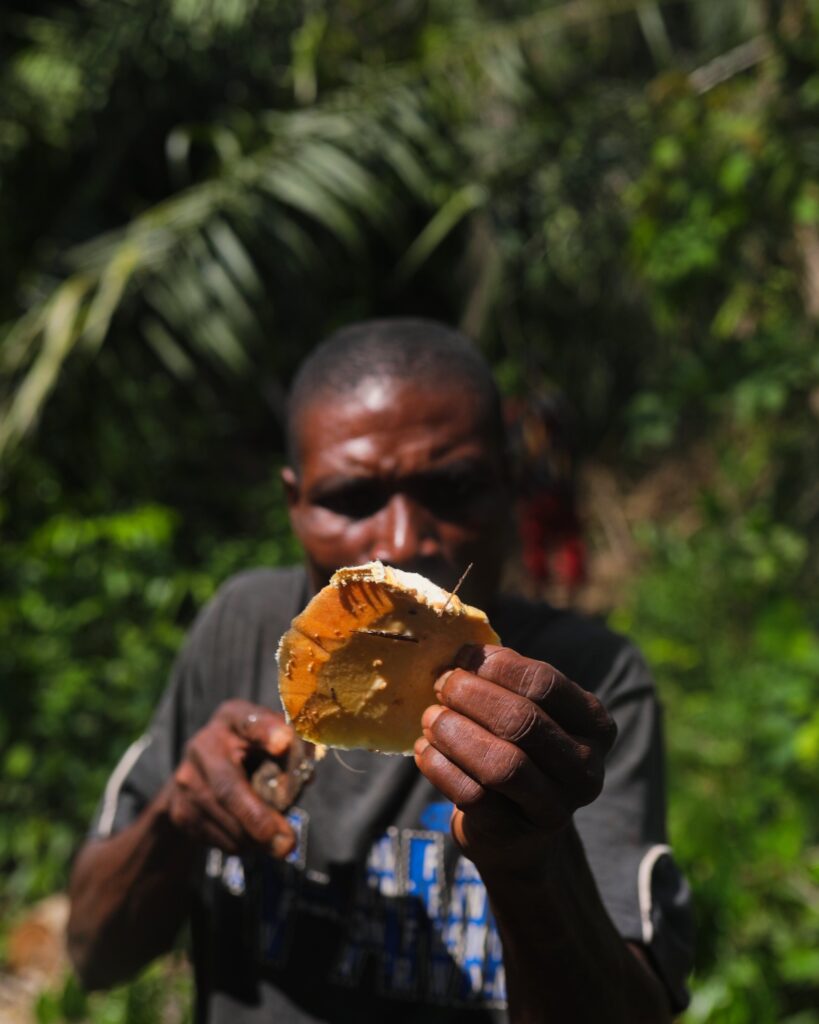
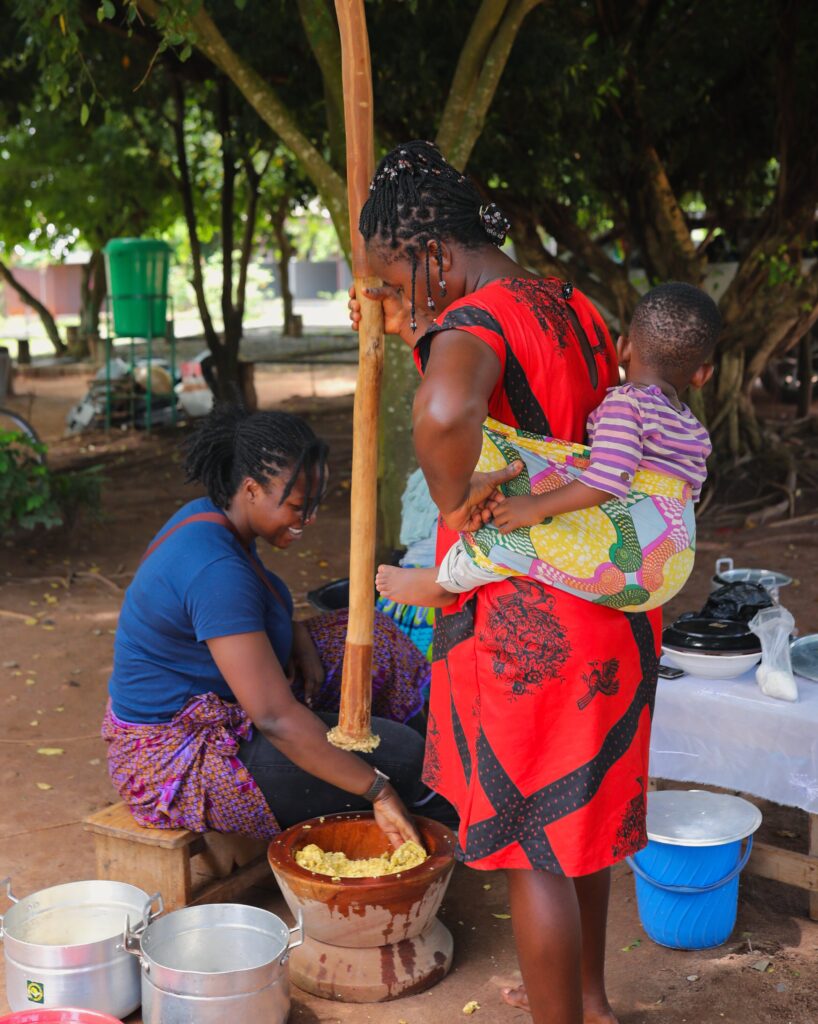
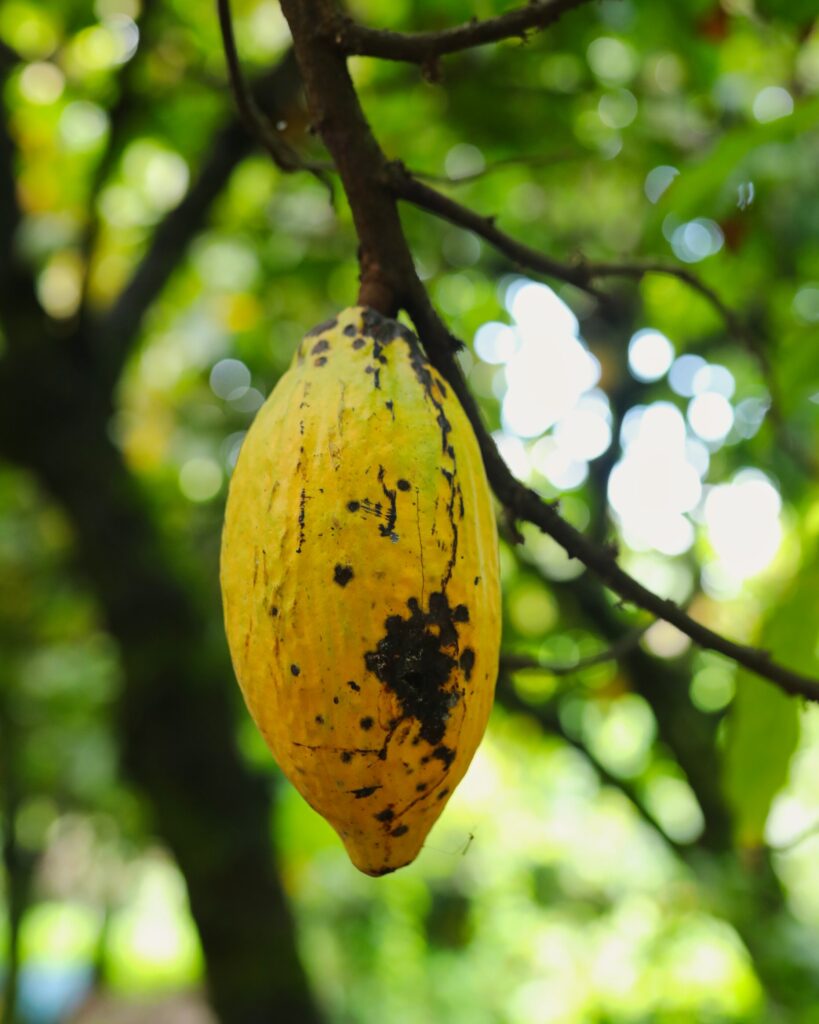
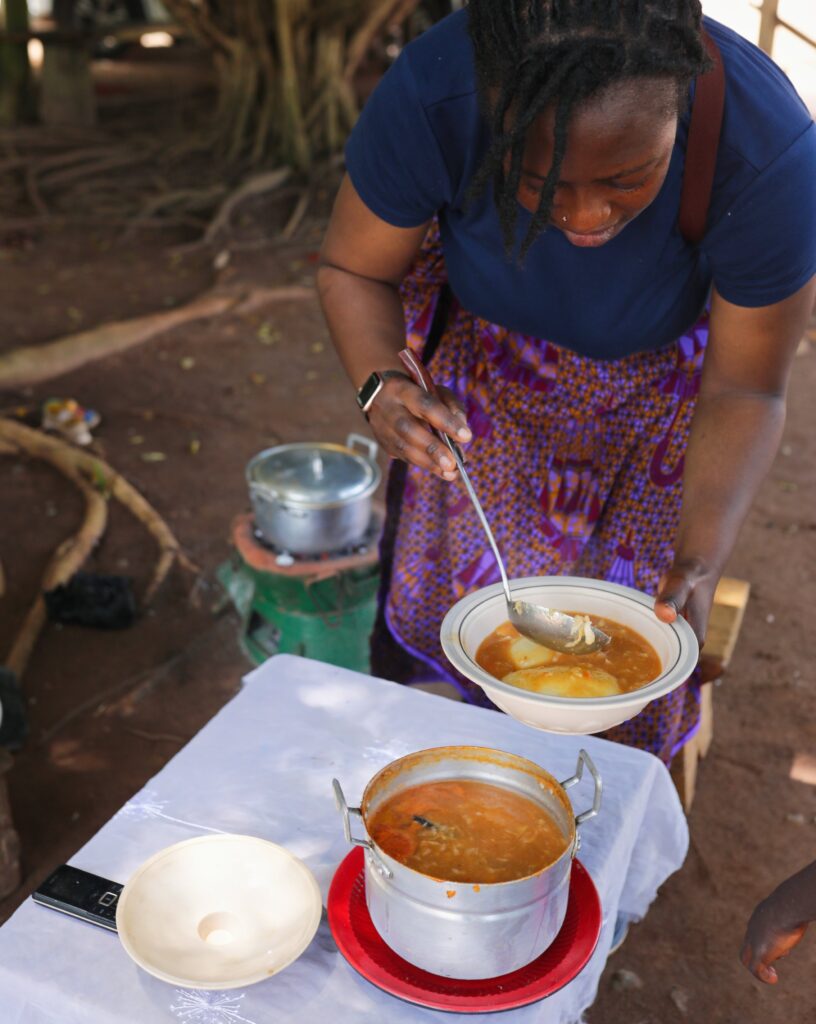
I had such a blast. We were incredibly lucky and had the opportunity to follow a palm wine tapper to learn about traditional palm wine. We followed the tapper into the forest where he showed us how he taps the palm wine and how he turns it into alcohol. We also got the chance to try freshly tapped palm wine and it was so delicious. It had barely fermented too so we got a lot of the sweetness from the palm sap.
Ntonso
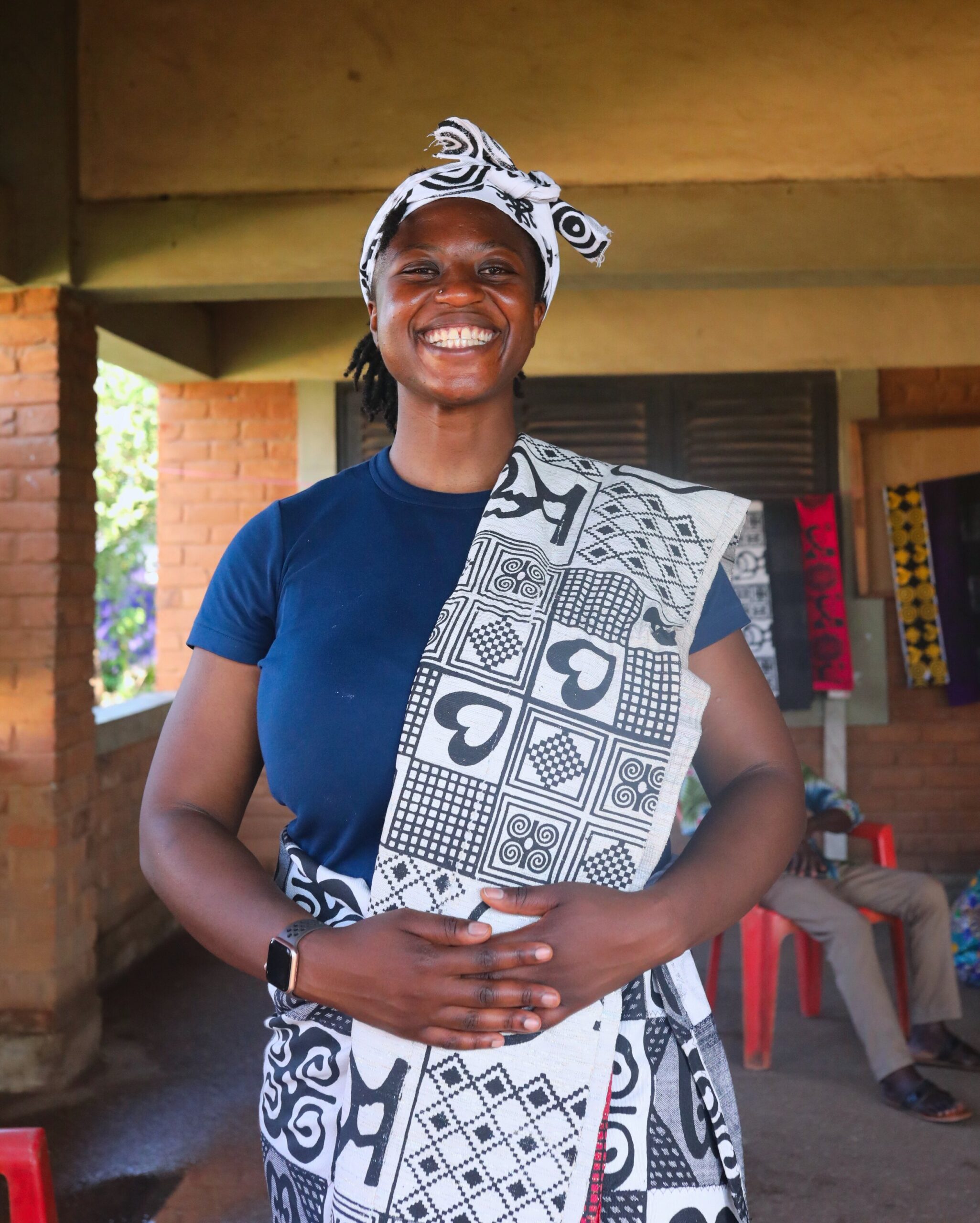
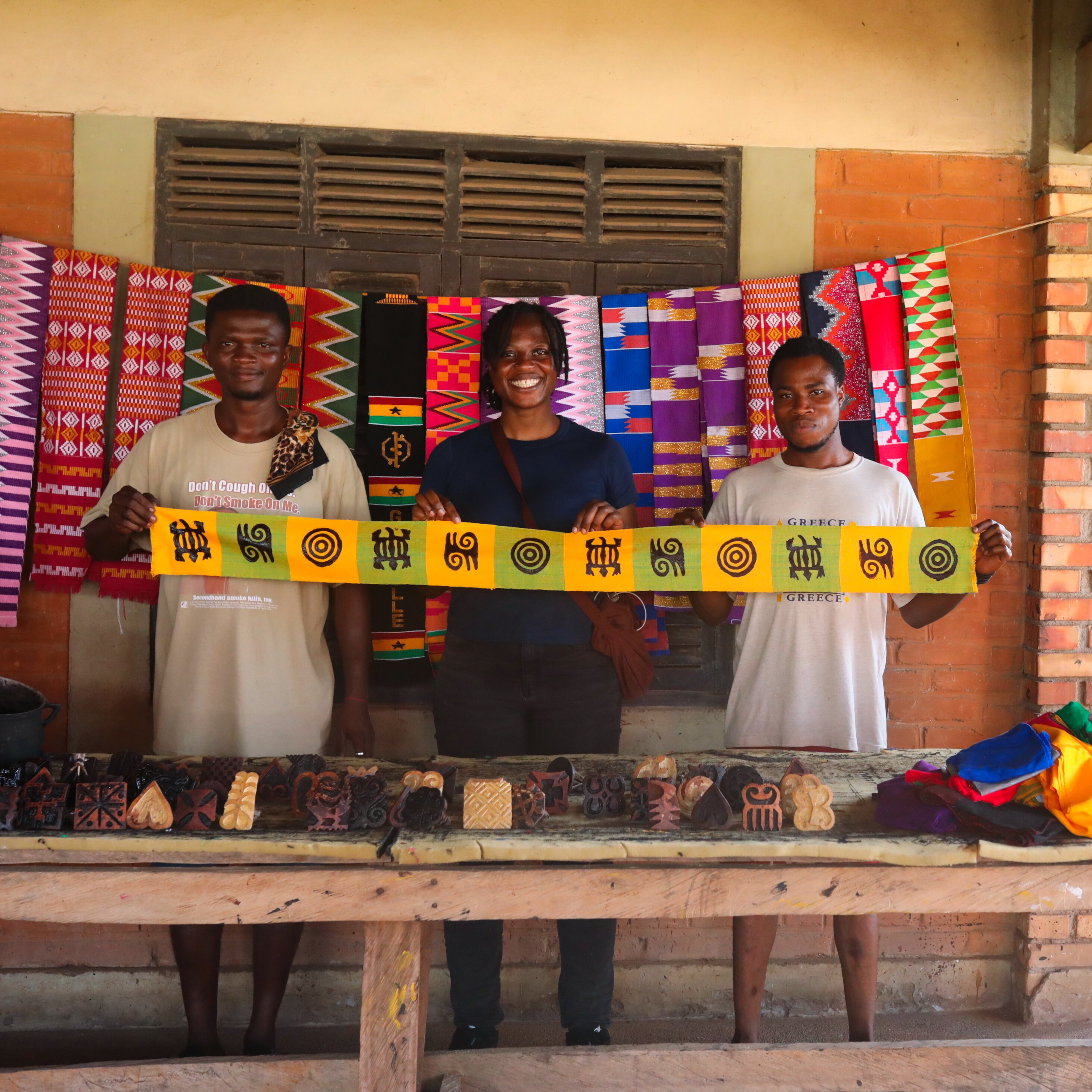
From Adanwomase we headed to Ntonsu to learn about adinkra symbols. Adinkra symbols constitute a group of symbols that symbolize cultural values and ideas. They are also usually paired with proverbs and are important parts of Akan culture, including Asante culture. Here I learned about the adinkra symbols, what a few mean, how they came to be and how they are added to clothes, through a natural dye.
From here we proceeded to Kumasi where we stayed the night.
The next day we made our way to the Manhyia Palace Museum. Kumasi is the second largest city in Ghana and the seat of the Asante Kingdom. The Asante Kingdom is one of the most well-known kingdoms in Africa, known for their impressive adornment of gold and their fearsome warriors. Established in 1701 by the first king Osei Tutu, they played an important role in the shaping of Ghana as it is today, with both good and bad historical legacies (cough cough slavery). Opon arriving in Manhyia, it is very evident how vast and important the chieftaincy is to Kumasi. Manhyia is pretty much a town on its own and the grounds are well maintained. The museum is located in the old palace building the British built for Prempheh I after he returned from exile after the Fifth Anglo Ashanti War/Golden Stool War. If you want to learn more about the Asante Empire, I highly recommend the podcast “History of Africa”; season 3 focuses on the Asante Empire. (I am using Asante instead of Ashanti because that is the more linguistically correct way to refer to the tribe). Our tour of the museum was brief, only covering a few chiefs and queen mothers with details about Asante culture and tradition. There are plans to extend the museum in time for the Asantehene’s silver jubilee with more artifacts returned from the US and on loan from England.
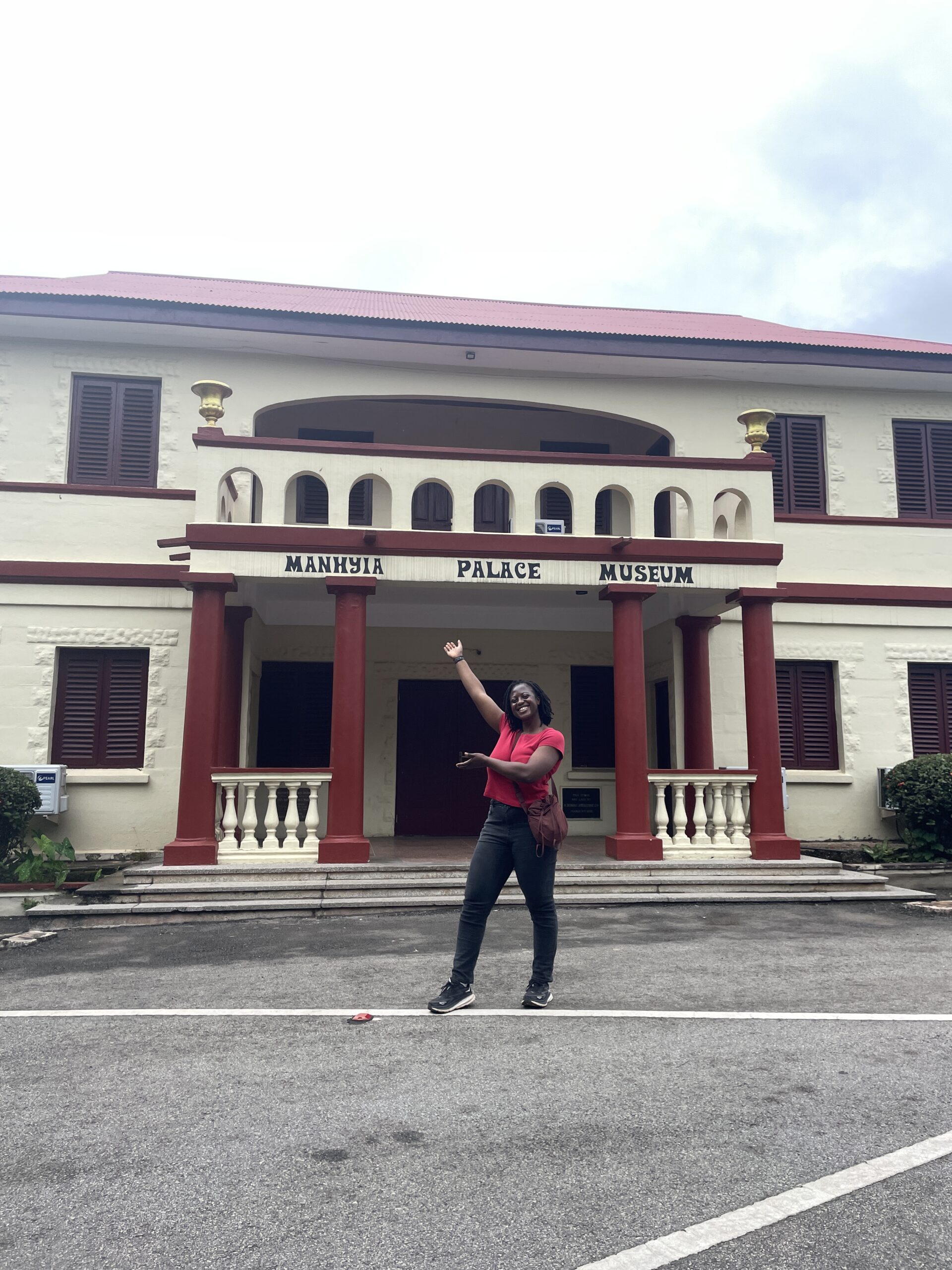
After we toured the palace museum, we headed to the largest indoor market in west Africa — Kejetia market. Like Makola, you can get everything you need in Kejetia. Amidst five large stories of vendors, we sampled ingredients and unique street foods you only get in Kumasi. One of them being ɛtɔ, which is technically a ceremonial meal. It is made with mashed plantains, peanuts, and red palm oil and served with onions, avocado (when in season) and egg and fish for non-vegans.
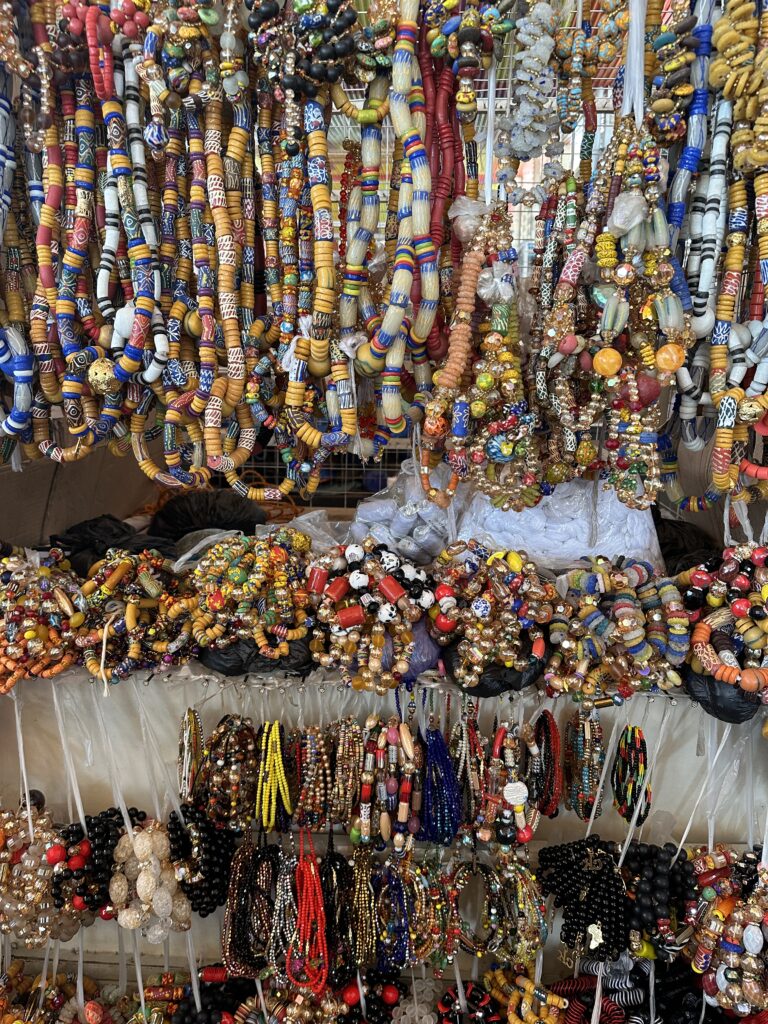

We also made our way to Ike’s cultural village for lunch before hitting the road for a five-hour journey back to Accra.
Organizing the Kumasi Trip
People and Places took care of this entire leg of the trip. They paid for the driver, all my activities, my hotel room as well as the tour guide. Given it was an overnight stay and a long drive, I spent 550USD. I was responsible for my meals and any additional purchases. I spent around an additional 50 USD.
Eastern Region
Aburi Botanical Gardens
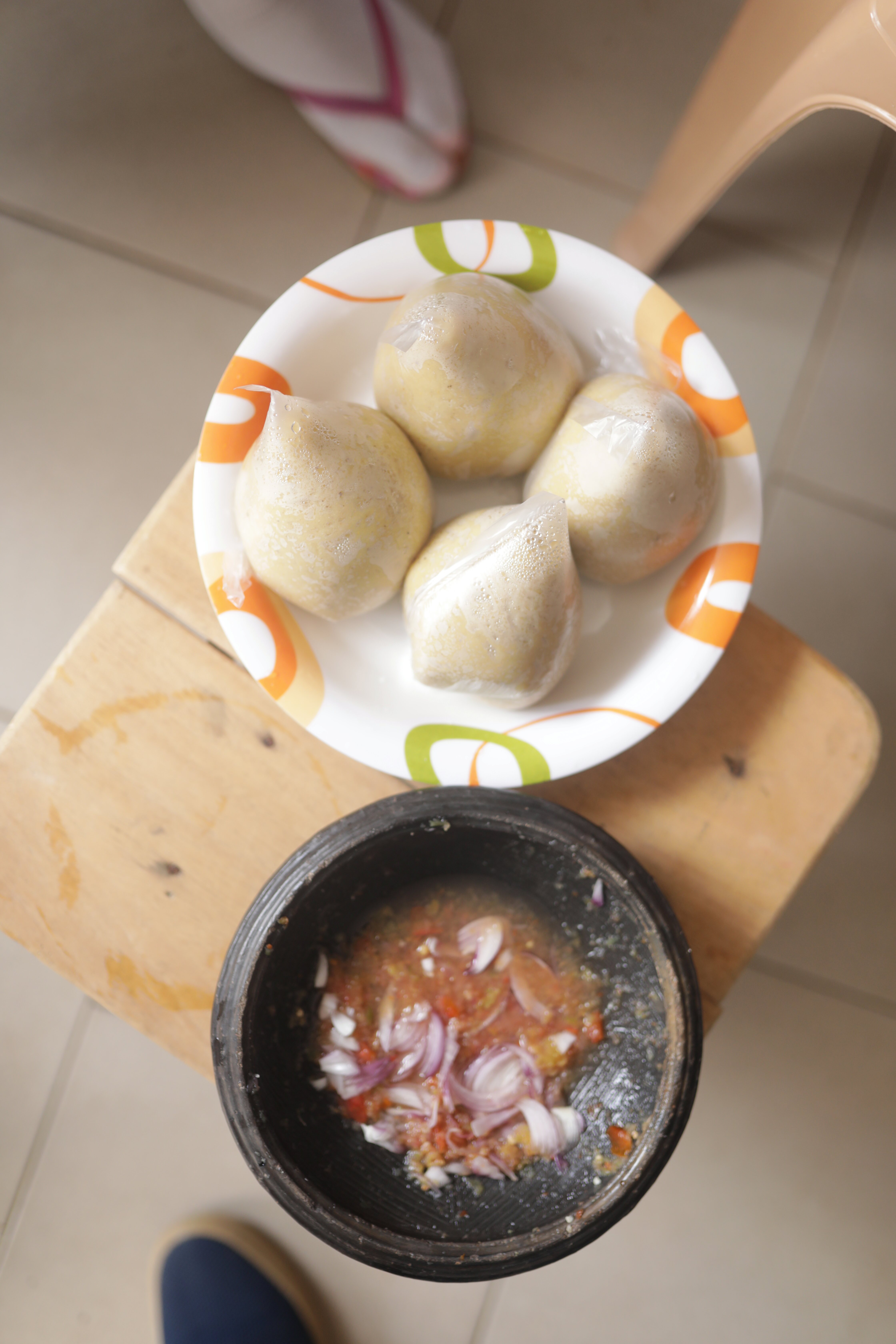
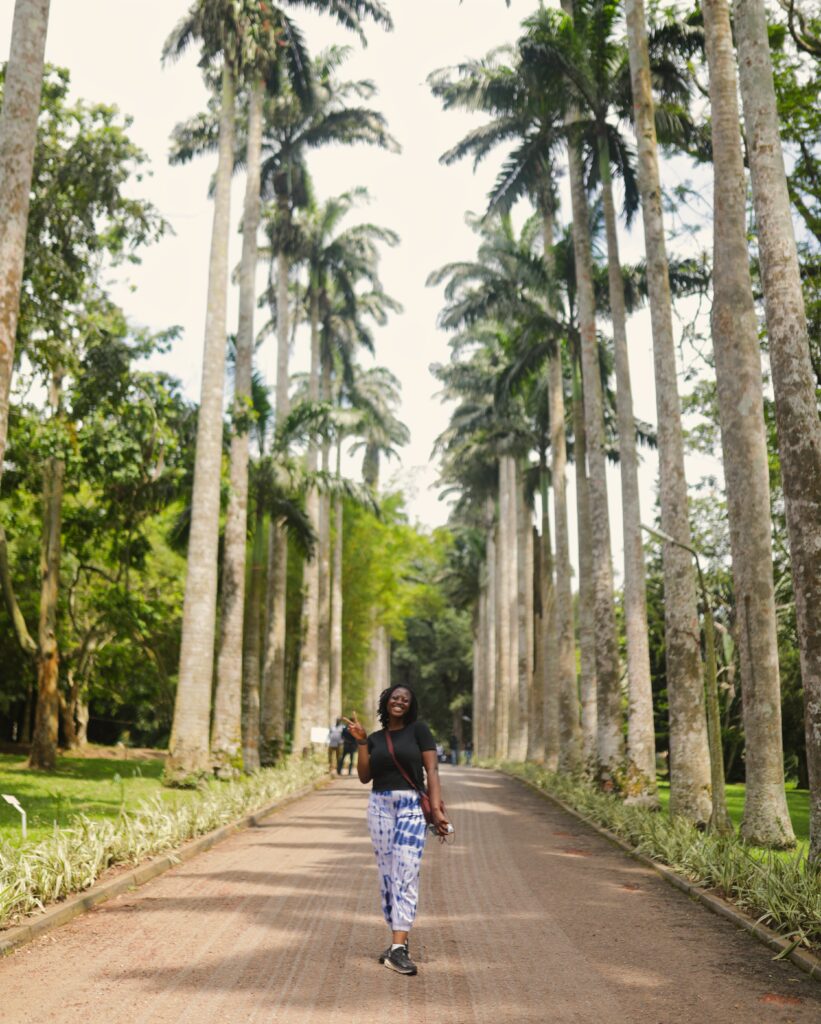
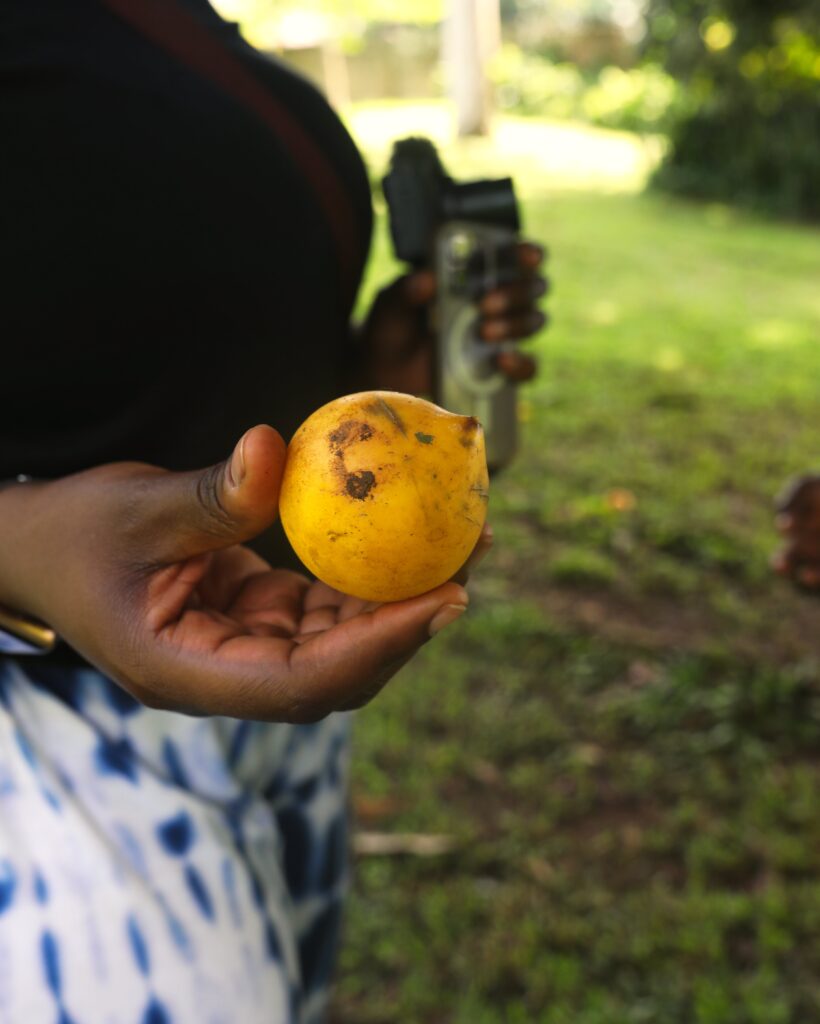
The Aburi Botanical Gardens are about an hour and half away from Accra sitting high in the Aburi Mountains. These gardens are a relic from the colonial era and contains a vast diversity of indigenous and imported plants. I partook in a full tour of the Aburi Botanical Gardens where I got a tour of all 7 lawns. Here I learned about ornamental trees, spice trees and indigenous spice trees. I got to also try some fruit on the plants and saw how nutmeg grew.
After, we followed our Aburi tour guide to his home where his wife prepared a delicious meal of banku for us. I had a great time chatting with Sister Christy about making food, tips on cooking banku and life in Aburi.
Tetteh Quashie Farm
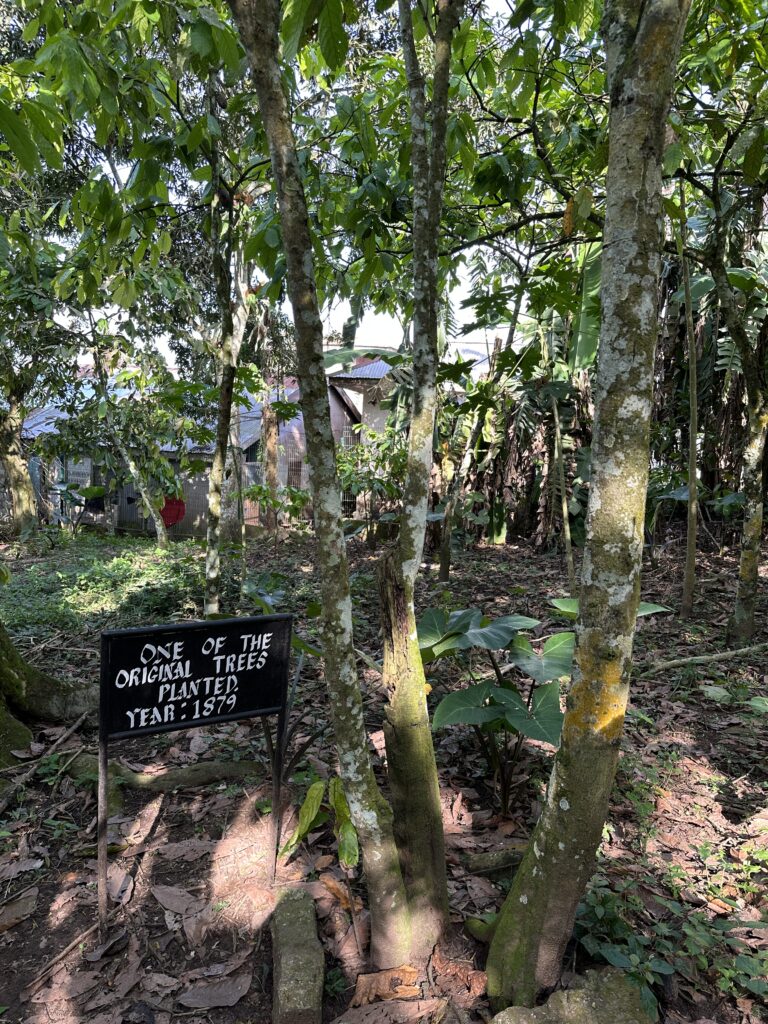
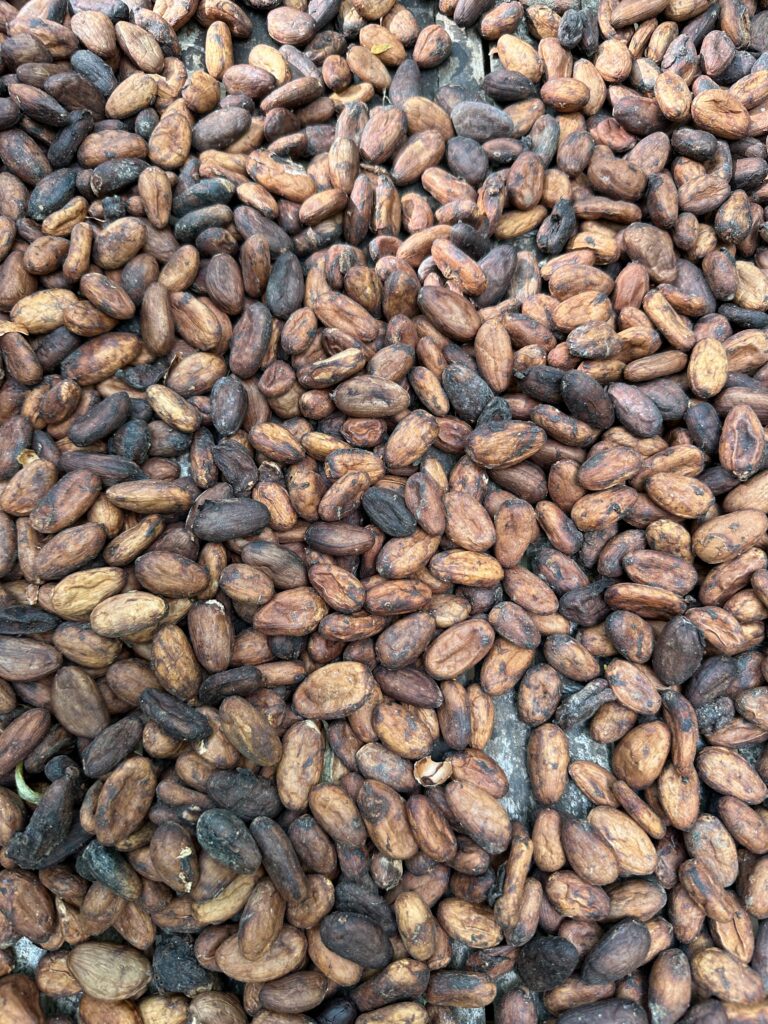
From here, we drove 30 minutes to the oldest Tetteh Quashie cacao farm. Although cacao trees are not indigneous to West Africa, Ghana and Ivory Coast are the worlds largest exporters of cacao; thanks in big part to the introduction of the plant by Tetteh Quashie. Tetteh Quashie, originally a Ga-Adagbe, had the opportunity to work in Fernando Po (currently named Bioko), an island that is part of present day Equatorial Guinea. Legend has it that he smuggled the seeds hidden inside his blacksmith tool box. You can still visit the place he planted some of the earliest trees, two of which still stand. Here I also learned about various uses of the cacao tree and how the seeds are processed into chocolate.
The trip to Eastern region was very quick and I returned back to Accra by late afternoon.
Organizing this trip
People and Places took care of everything for this trip including all my entrance fees, driver and the banku we made. This was the last leg of my trip with them. I paid 130USD for this trip. I also tipped my tour guide and driver at the end of this trip with an undisclosed amount.
Volta Region
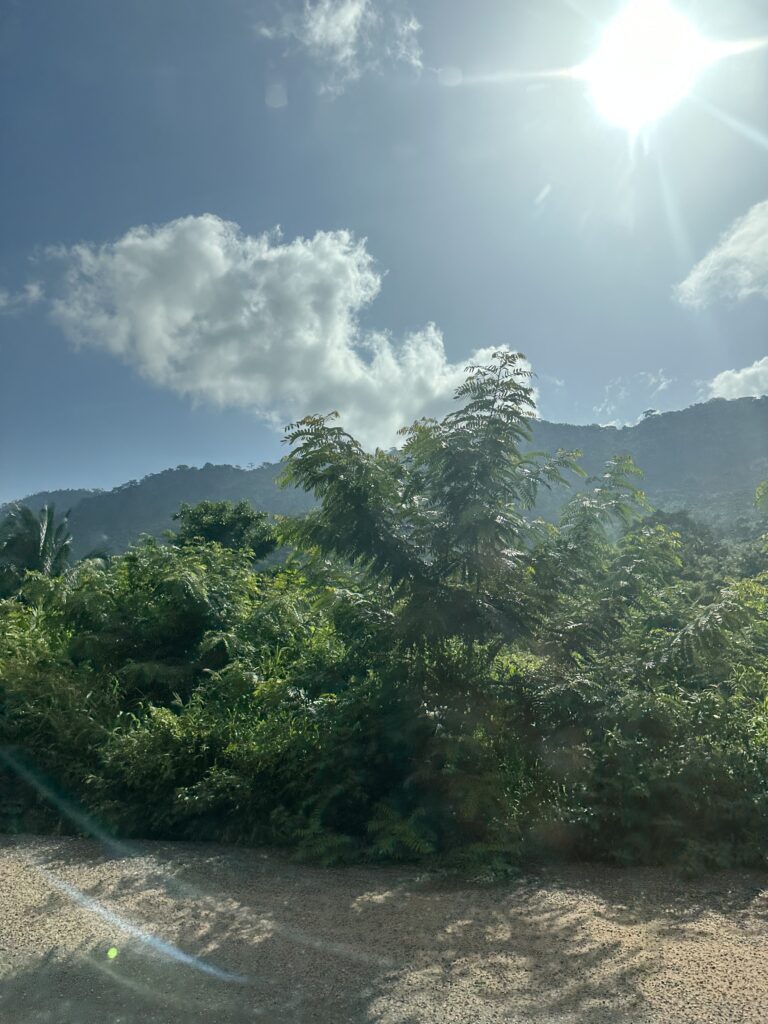
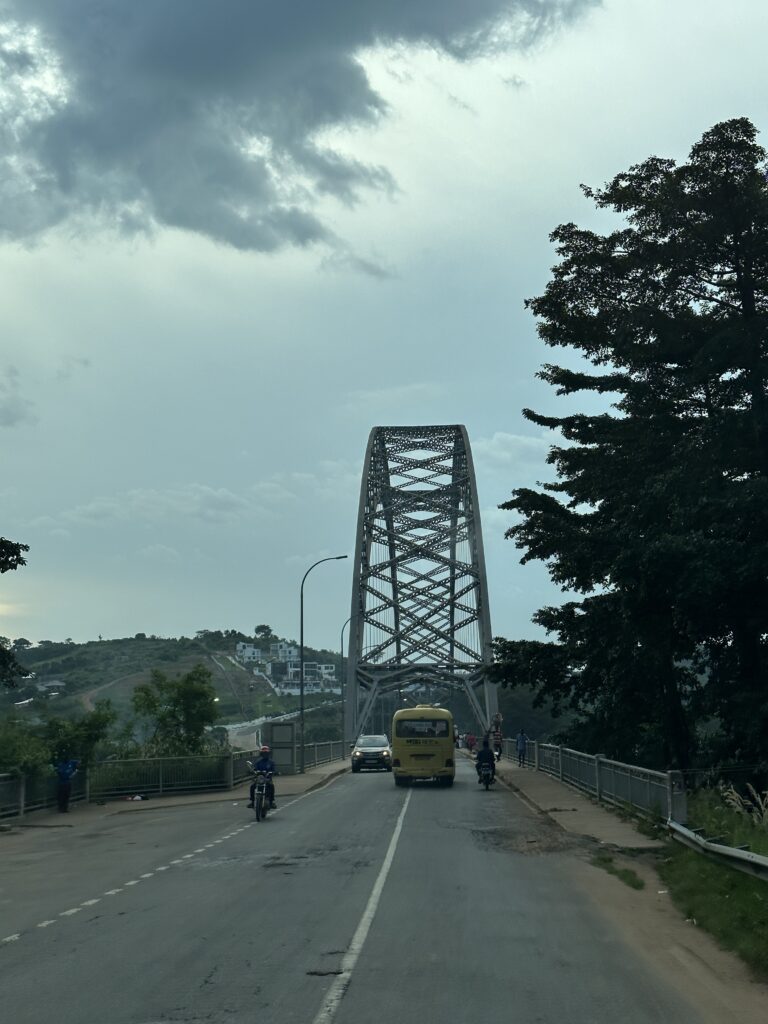
After my very packed week, I ended the weekend with a short trip to Volta Region, specifically Liati Wote, the town with Ghana’s tallest mountain — Afadjato. This trip was kindly organized by Jolinako Eco Tours who hosted me at their Tagbo Falls Lodge.
My day started with an early drive to Liati Wote. It was about a 4 hour journey from my accomodation to Tagbo Falls Lodge, and like many of my road trips in Ghana was absolutely stunning. The drive goes from Shia Hills to Eastern Region, accross the Adomi Bridge and into the lush mountainous landscape of the Volta Region.
People travel to the Volta and Eastern region in search of water falls, as you will find amazing water falls and hikes in this region. However, I was there to learn about food and experience a weekend in an eco-friendly Ghanaian town.
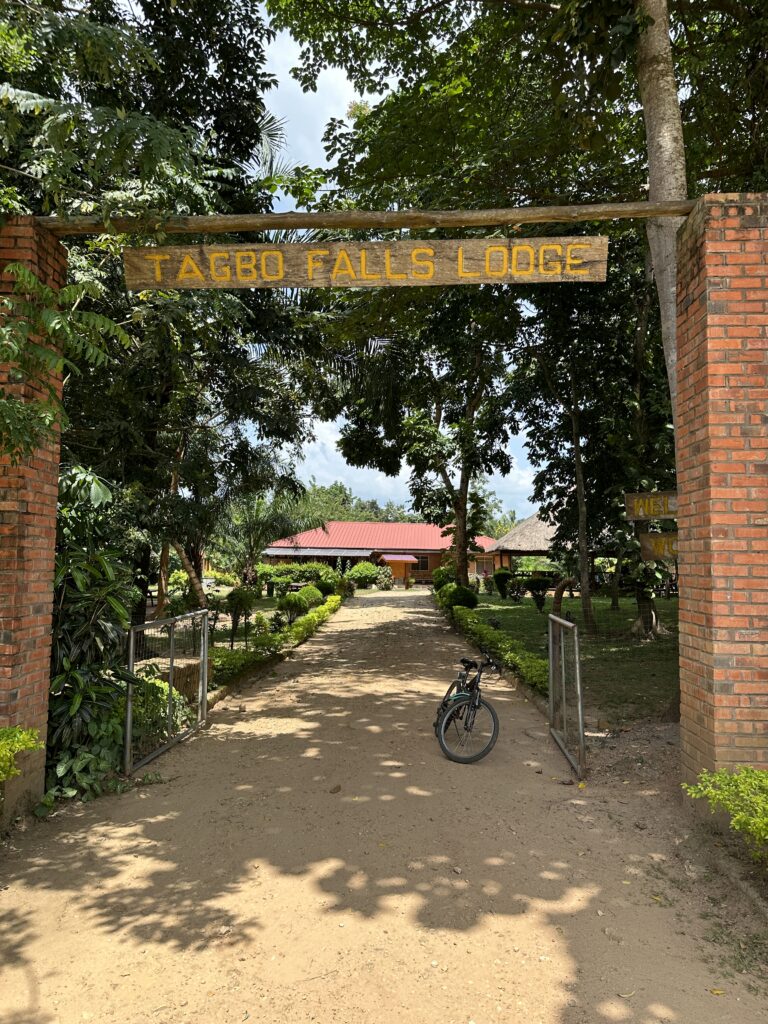

Tagbo Falls Lodge gets its name from the local water fall in the area and it is truly an eco friendly lodge. The lodge runs on solar power with local and eco friendly lodging and a farm to supply food. I started my trip with an extensive herbal tour with the local herbalist, learned all about how the town is trying to stay eco-friendly, had a delicious vegan lunch and then visit Mama Mawusi who walked me through the entire palm oil production. The palm oil production was really the major reason I came to Volta Region.

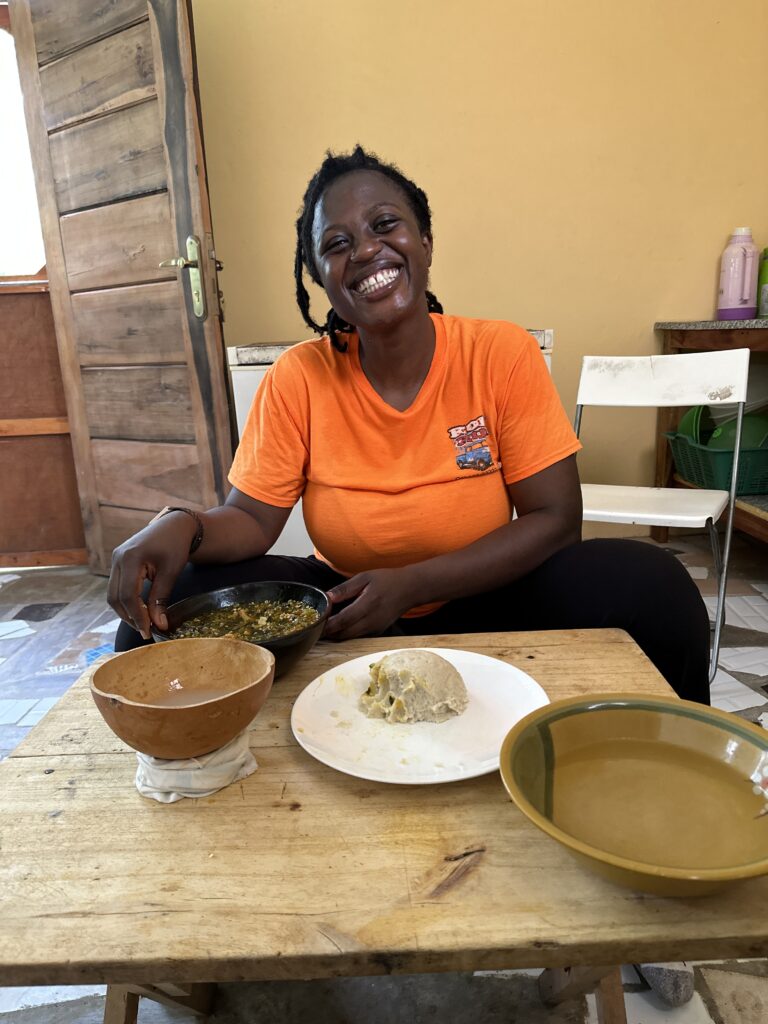
The Voltarians/Ewes are known for their delicious seasoned palm oil, and as a palm oil stan, I just had to go and see it for myself. For the full process, make sure to check out this video. The oil palm holds a very sacred place in many southern ghanaian cultures bridging cultural values, histories and spiritual practices for centuries. In Akan culture, the abe dua (palm tree) is an adinkra symbol symbolizing resourcefullness as all parts have a function. For the Ewes, it is called ede ti, which means complete tree. It still very much an important crop, processed in a manner that our ancestors have been processing it for centuries before the colonialists took the crops to destroy eco-systems in South East Asia. This was such an amzing process to witness and I got to take some home with me. I actually brought a small bottle back with me to Canada. For more details, make sure to check out this video.

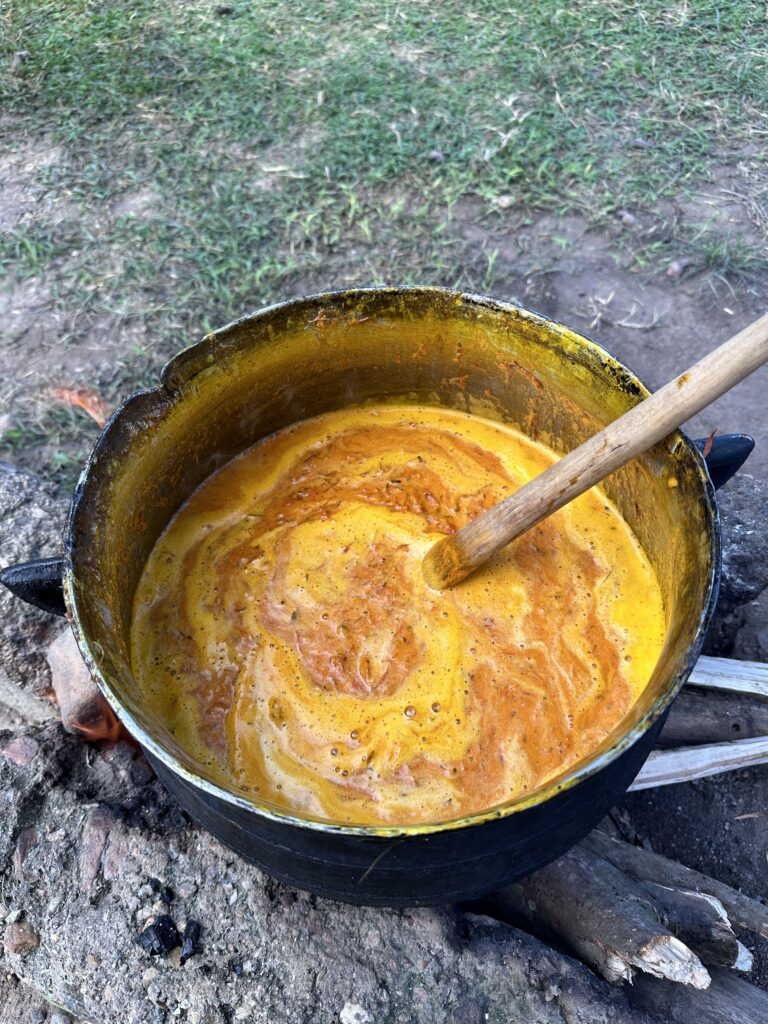
Aside from palm oil, i got to check out some local indigenous rice farms and eat local red rice. If you are unfamiliar, the two cultivated species of rice were cultivated independently in West Africa and East Asia. To learn all about Indigenous West African rice, make sure to check out this video (click here). I went to yet another palm wine hunt and got to try very strong palm wine in the forest in Volta region. I also got to see how they made their local alcohol and noticed the incredible similarities with the process in the Ashanti region. To cap off my trip, I took a cooking class with the staff in the Tagbo Falls kitchen and had an absolute blast. We cooked ademe detsi (jute mallow soup) with ewɔkplɛ (corn swallow).


I returned back to Accra incredibly stuffed and happy.
Organizing this trip.
Jolinaiko kindly offered room and board in exchange for an online review. They organized a driver to take me to and from Accra to Tabgo Falls, which I paid for. I also paid for all of my meals and tips for everyone who made my stay incredible. Overall I spent around 300USD for the entire weekend.
There is more to come! Stay tuned for my Northern Ghana itinerary.
Pricing and Additional Details
My entire itinerary is quoted in USD because it was a good middle ground between me who lives in Canada, and my travel agencies that operate in Ghana. People and Places offer packages in dollars while Jolinaiko offers packages in euros, based on their international clientele. The Ghanaian currency is quite unstable and prices in Ghana are always reflecting this instability so costing in a more stable currency like USD or Euros is a lot more economical for travel agencies.
A lot of my professional photos were provided by Nana Yeboah who was my guide from People and Places.

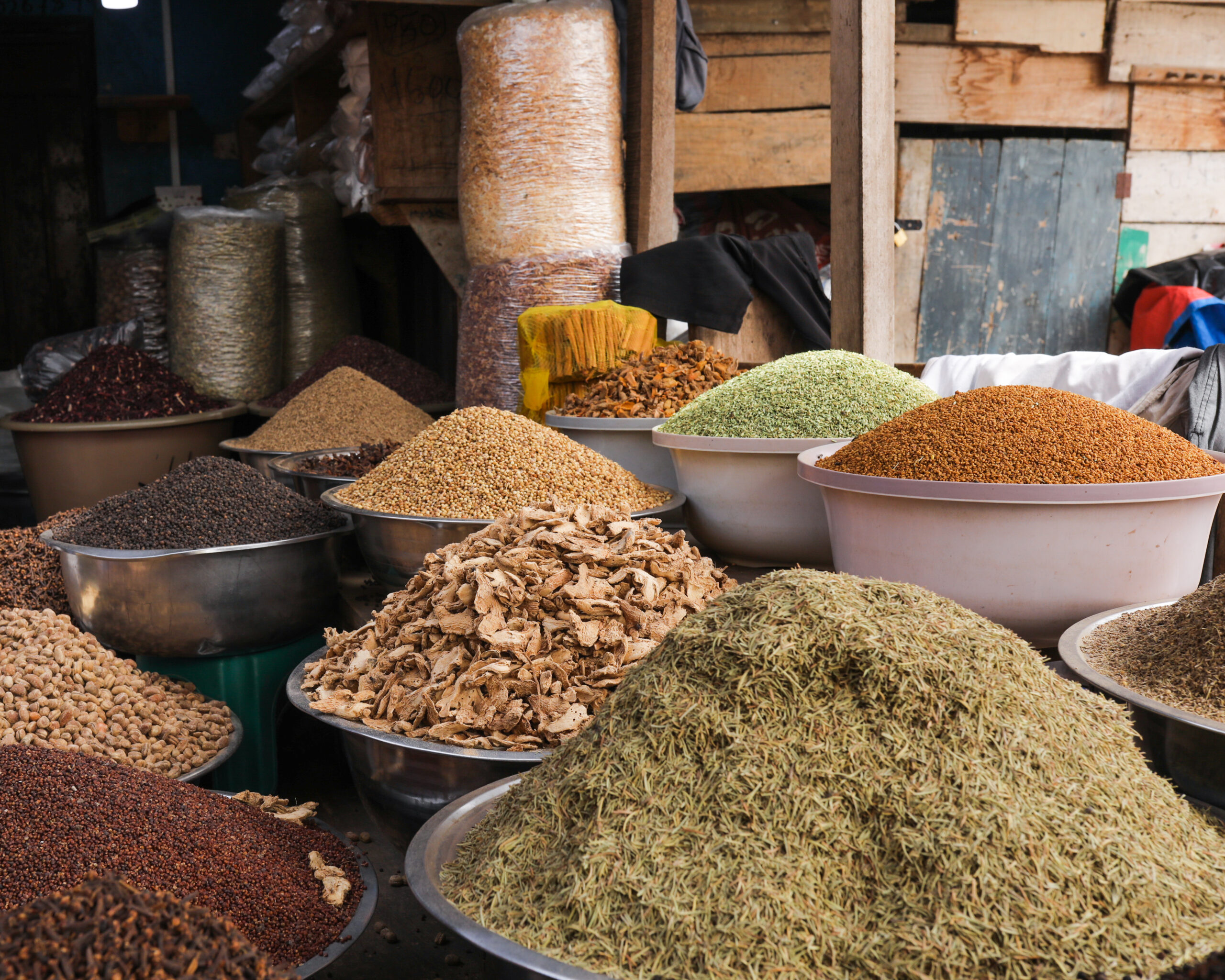
No Comments